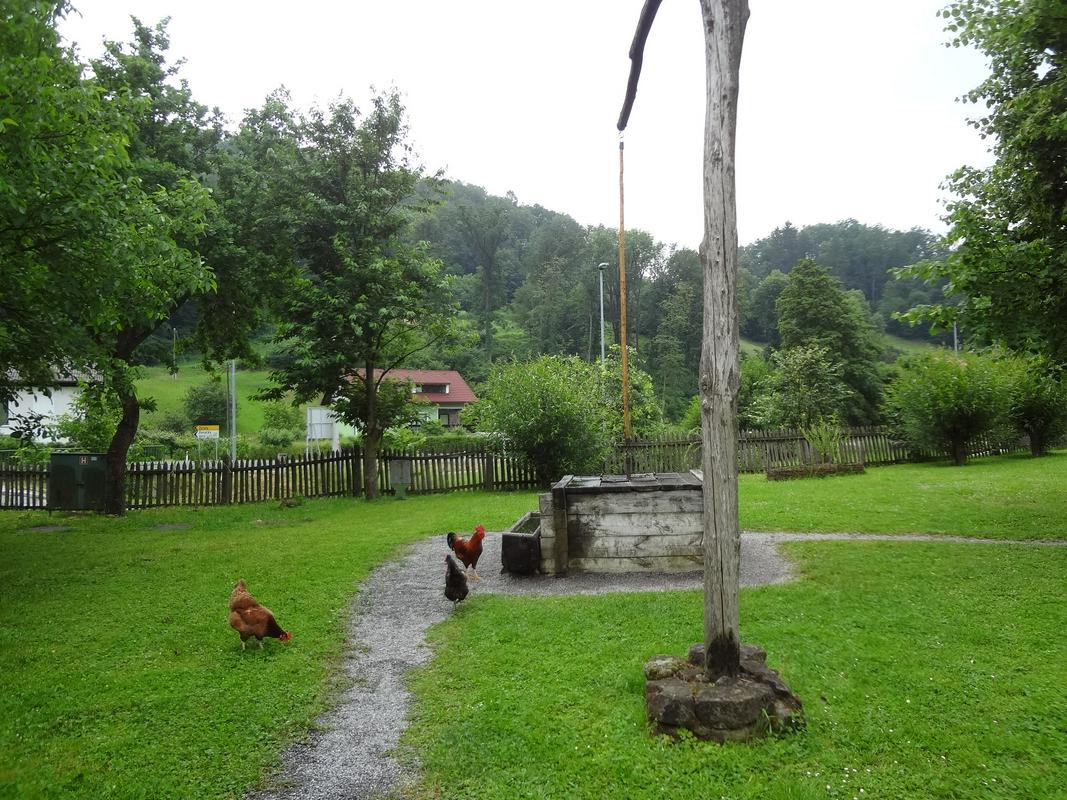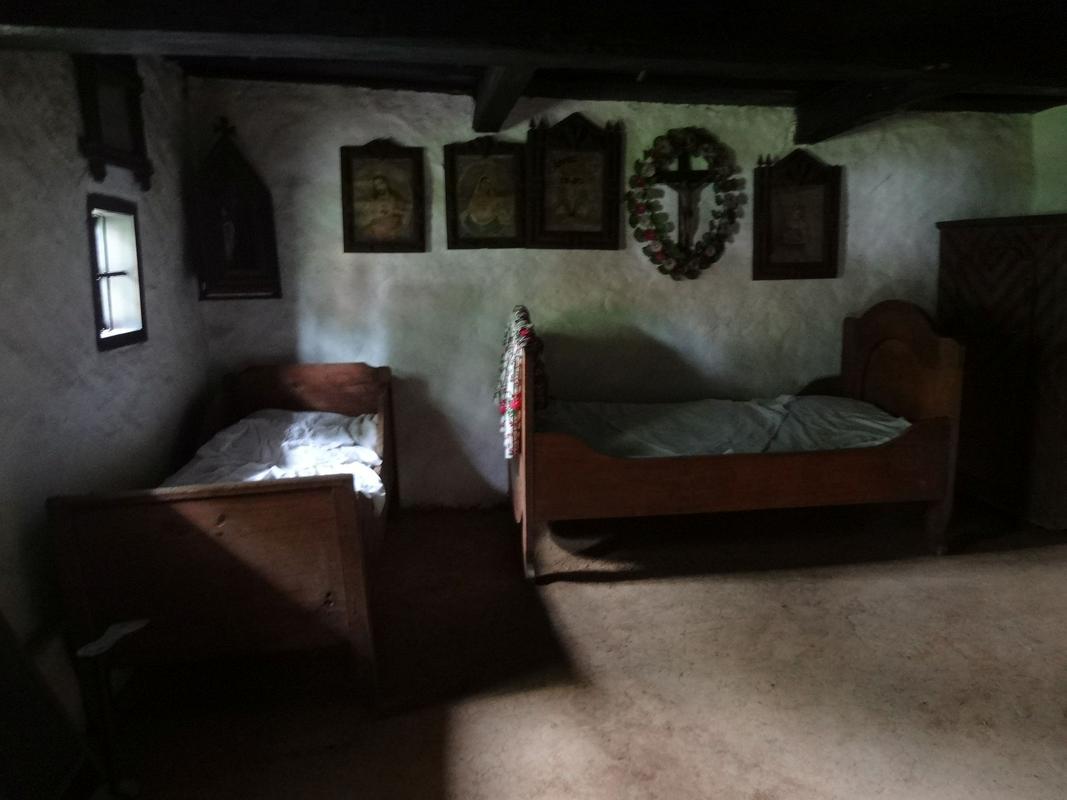
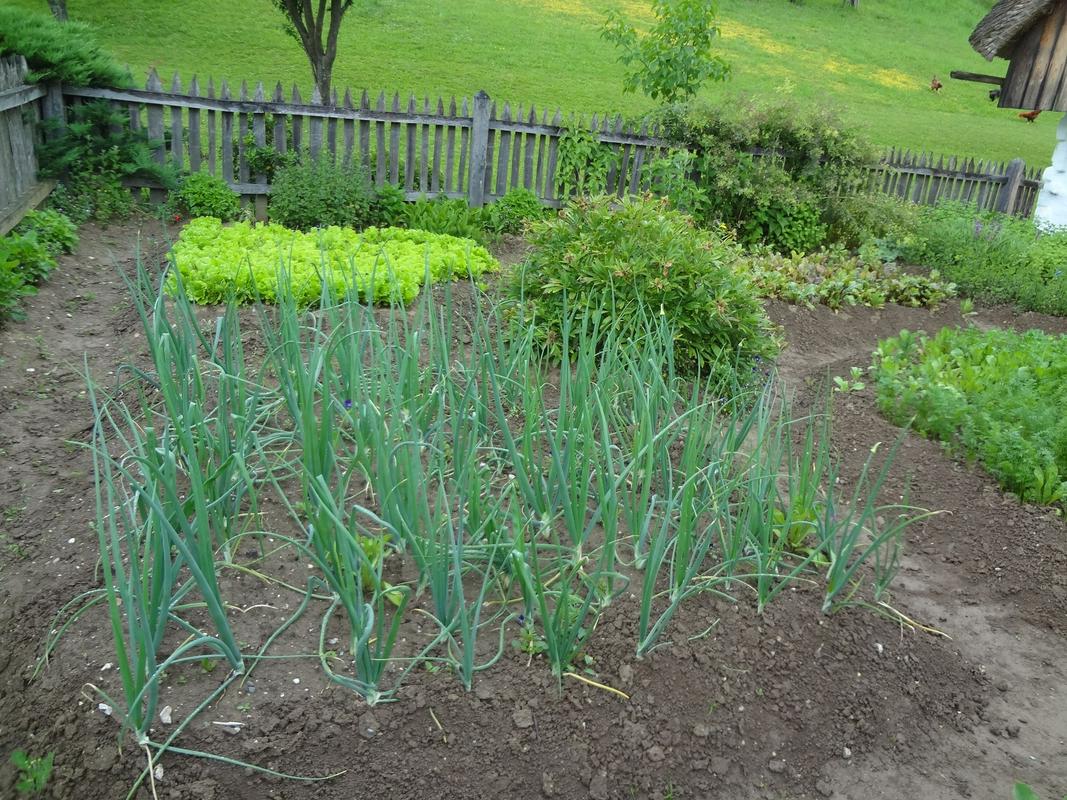
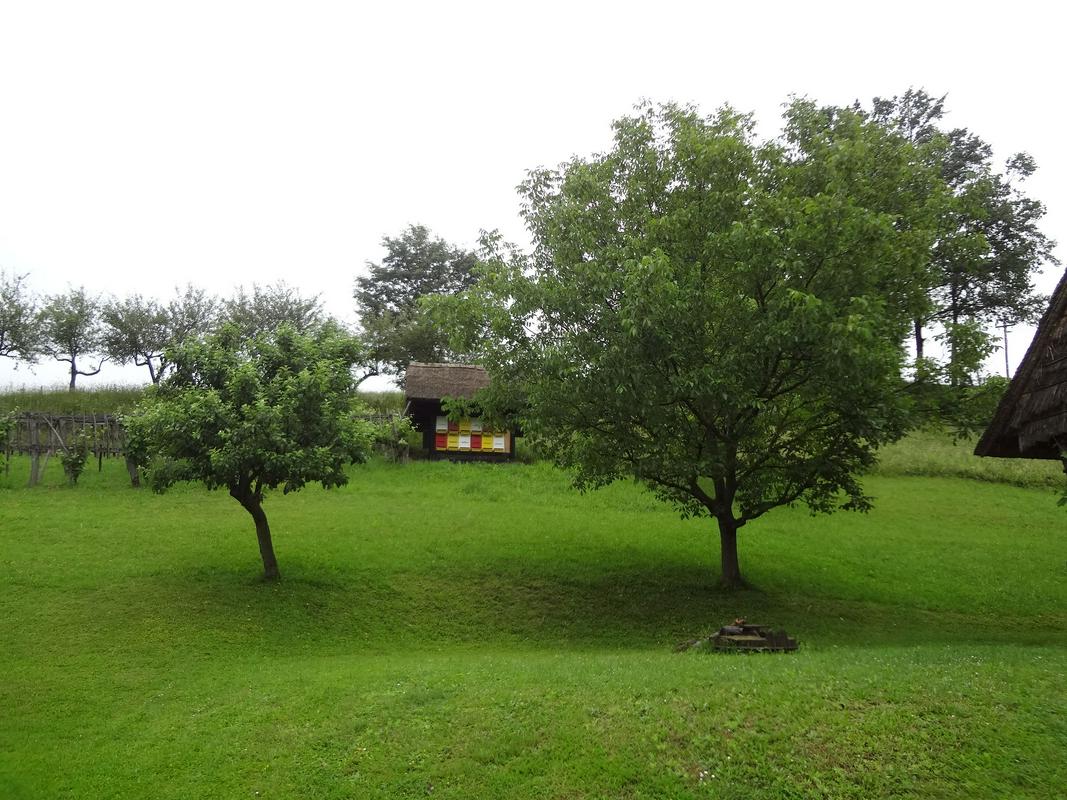
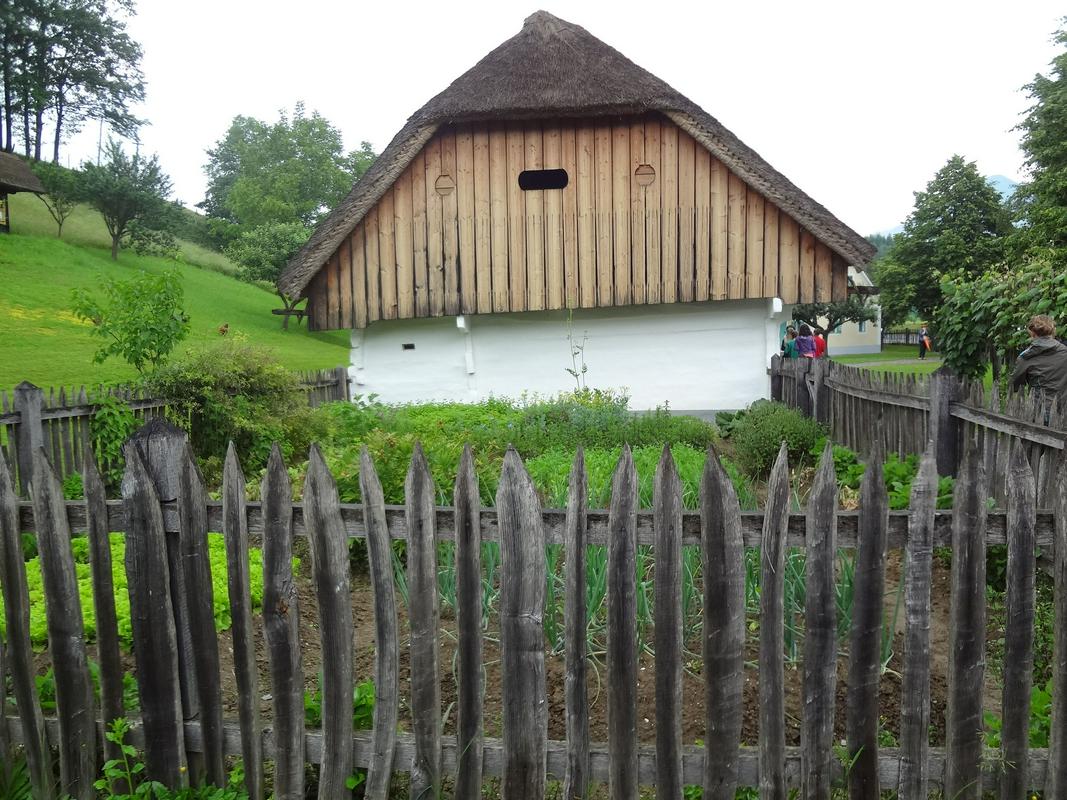
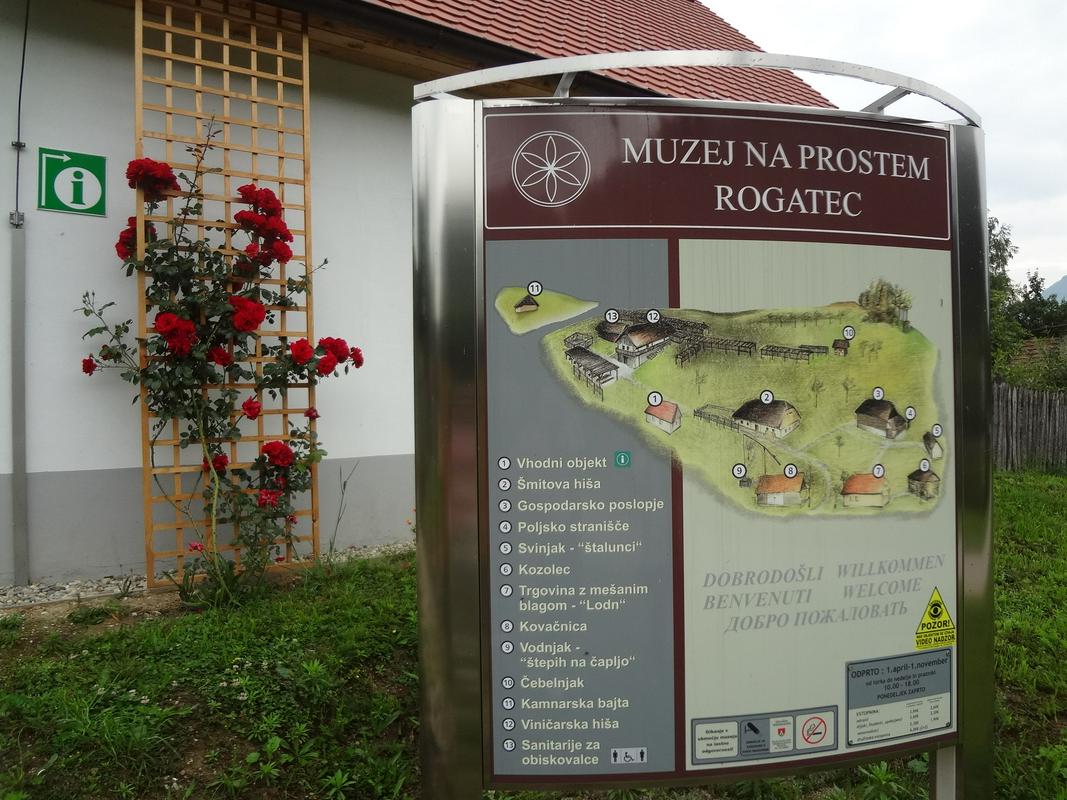
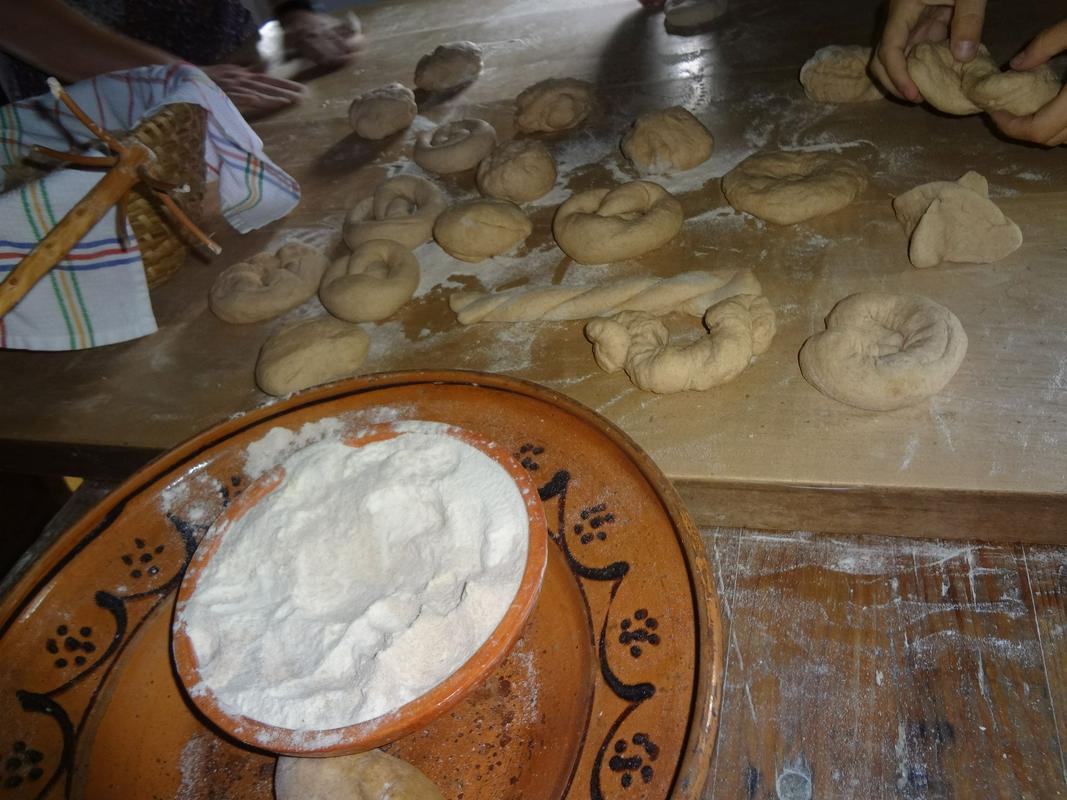
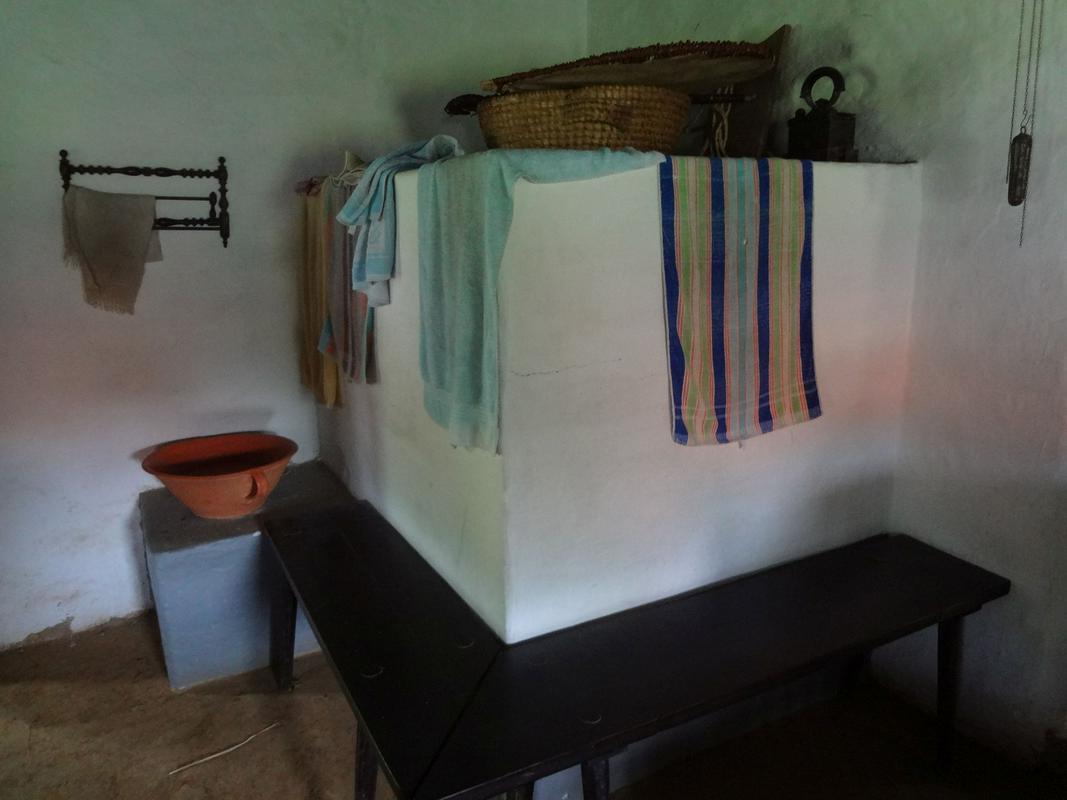
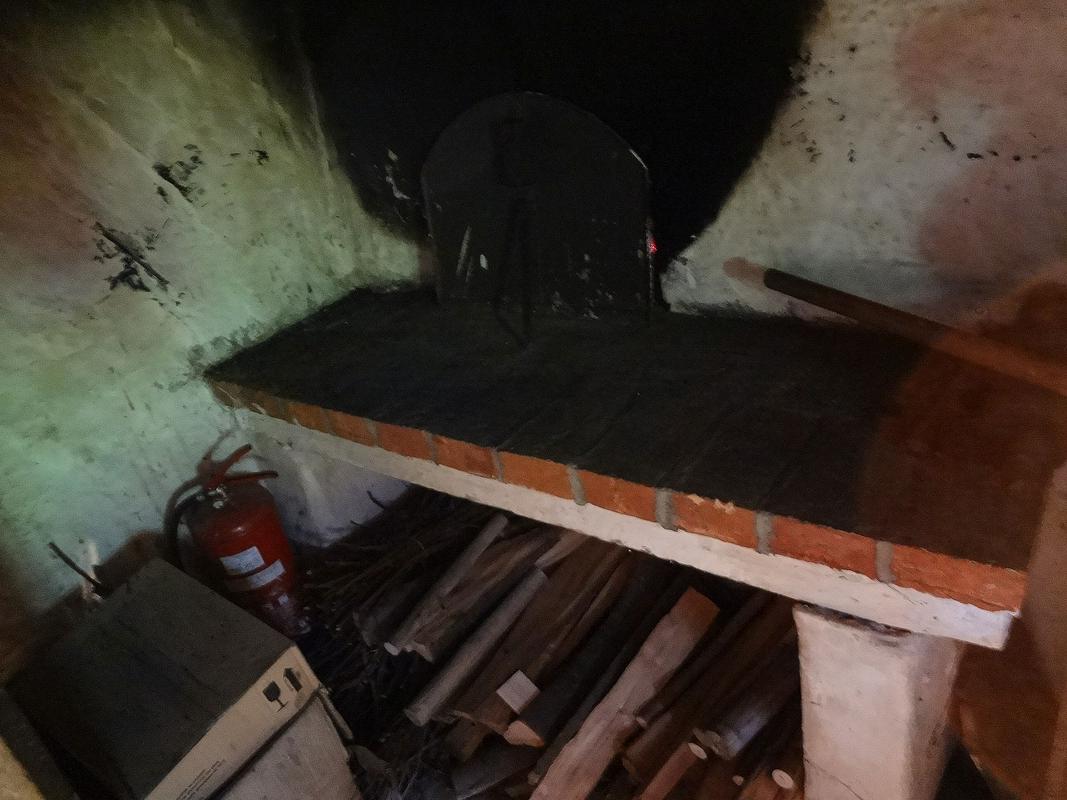
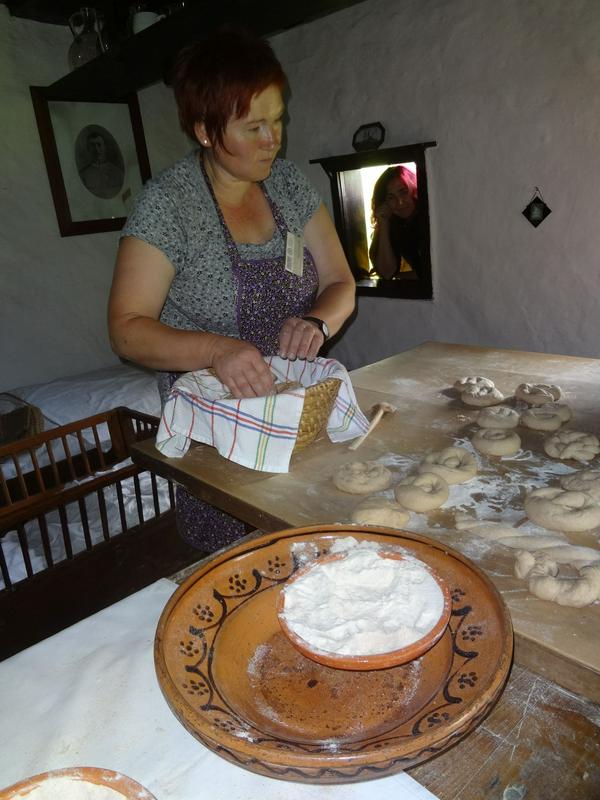
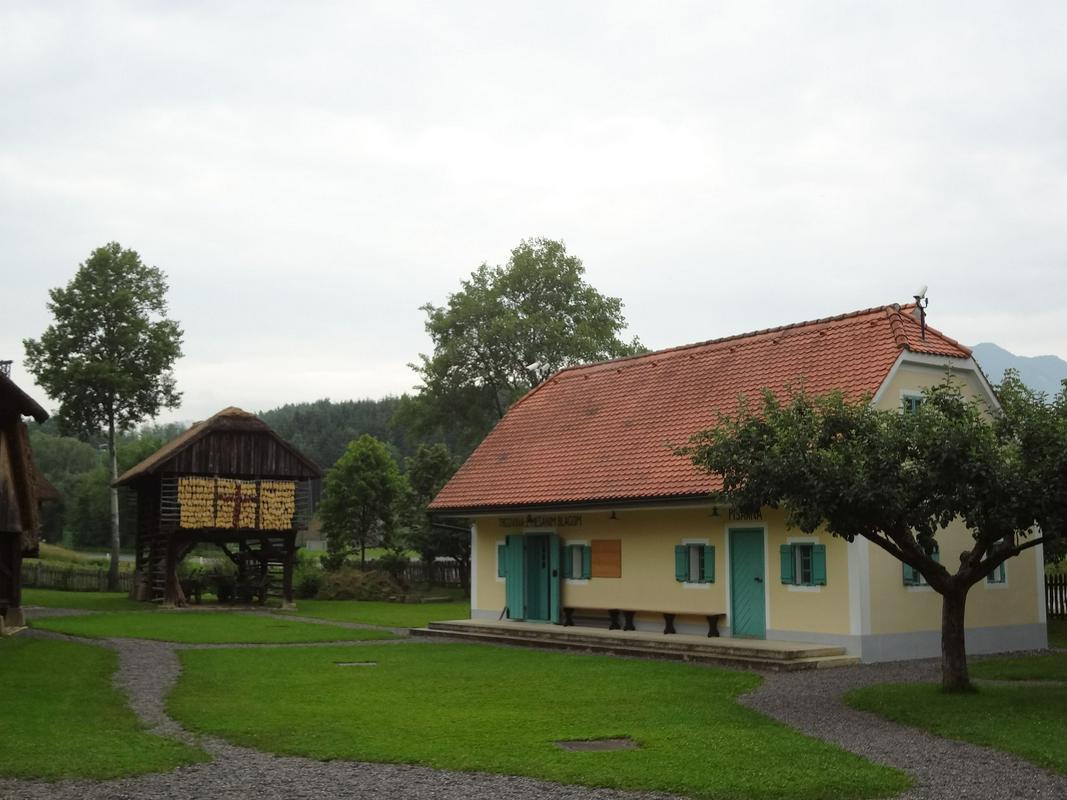
History is vanishing in front of our eyes! At the biggest open-air museum in Rogatec many of you will nevertheless say: "I remember that, as if it was yesterday!"
Driving around Slovenia we can still see houses with straw roofs, wooden fences with pencil sharp points, and even outbuildings which were full of life 40 years ago, but are falling apart today. There was a time when domestic pigs ate potatoes boiled in "alfi" (a wood fired cauldron big enough for boiling plenty of vegetables), when milk was carried in milk cans to assembly points, which every bigger village had, and when children loved peering into wells and loved to help bake the bread on Sundays. Sometimes they also made the "gibanica" pastry, if there was enough milk to make the cottage cheese.
Now it’s a museum. 40 or 50 years ago it was a typical Styrian home
The open-air museum in Rogatec resembles a normal house yard for many, where a person might spend a Sunday visiting friends who have a larger family, a forge, and village shop. The only thing is: that particular family lives in the 19th or beginning of the 20th century. The museum presents the typical living quarters, outbuildings, vinedressers' cottages with vines, pigsties ("štalunci"), blacksmith forges, "toplar" double hayracks, apiaries and toilet facilities (wooden pit toilets) of that time. It presents the lives of farmers and craftsmen in the 19th and beginning of the 20th century, especially under the slopes of the Boč and Donačka Gora mountains, as well as around the areas of Macelj and Obsotelje in southern Styria (Štajerska).
Today we call it "organic" or "seasonal"
"People didn't complicate as much as they do now. People ate what they produced. Today we call it seasonal food. At that time they had no idea and never emphasized that the food was seasonal. They always ate what was on offer, and that was always "seasonal", explained the tour guide.
"There was grass in the yard. All the walking paths were covered with sand or little pebbles, so that there wasn't a lot of mud when it rained. The chickens were free-range, so were the roosters, as well as the turkeys or domestic geese. There were no decorative plants or "fragrant" cypress trees. There were only fruit trees, bramble bushes, gooseberries or raspberries (used instead of fences). Fruit trees were the most useful and practical of them all, as they gave people fruit (e.g. walnuts, apples, pears, cherries, sour cherries…) and shade in the summer. Most simple, practical, healthy and completely natural," the tour guide continued to say.
It might be good to start you museum visit at the black kitchen, where the pleasant and well-known smell of homemade bread, baked in a bread oven, spreads all around.
"Look, history is vanishing in front of our eyes! This is a residential folk heritage and cultural tradition, known to every Slovene who is at least 40 or 45 years of age, and comes from the north-western part of Slovenia. The house yards in the regions of Primorska, Dolenjska and elsewhere might have looked different, but they all lived that way – without electricity, with water from the wall, dishes made out of clay and bags made out of straw. People were skilful and they didn't complicate. They were hard-working and they lived in harmony with nature and the seasons of the year," explained the tour guide.
"Štrbunk" pit toilets and "lavor" washing bowls
The "štrbunk" and "lavor" were the normal hygiene necessities of that time. Today it would be unthinkable to imagine a life without modernly equipped bathrooms and toilets without running water. Toilets in the 19th century were a separate unit, located away from the living quarters (due to hygiene reasons). Usually it was a wooden outhouse placed near the pigsty, barn manure and barn ("štala"). Can you imagine walking every night in the middle of the winter to a toilet like that? Many of you reading this article have probably experienced that and think of it as nothing special. However today we can only experience those things at a concert or mass event (of course not in the winter time, and we are speaking about free standing plastic toilets).
As there were no bathrooms water was heated on wood-burning stoves ("šporheti"). The water was then poured into a bucket or into a bigger bowl ("lavor"). After that one would take the "žajfa" (hard soap) and the washing of the body with a cloth would begin.
A museum without showcases but with a diverse selection of workshops for all generations
Due its exceptional characteristics (cultural, ethnological, regional and historical) Slovenia's biggest open-air museum in Rogatec has great importance for Slovenia. In 1999 it was declared a monument of national cultural importance. It is mostly visited by schools, as it is not the kind of museum pupils and students are used to visiting (a museum without showcases). For the elderly population visiting the museum can be an emotional event, as they're able to revoke their childhood and youth experiences and identify with all that is shown.




















































